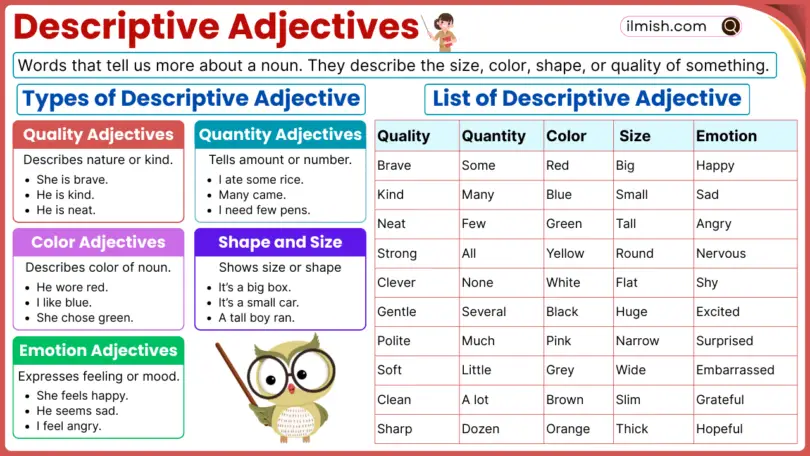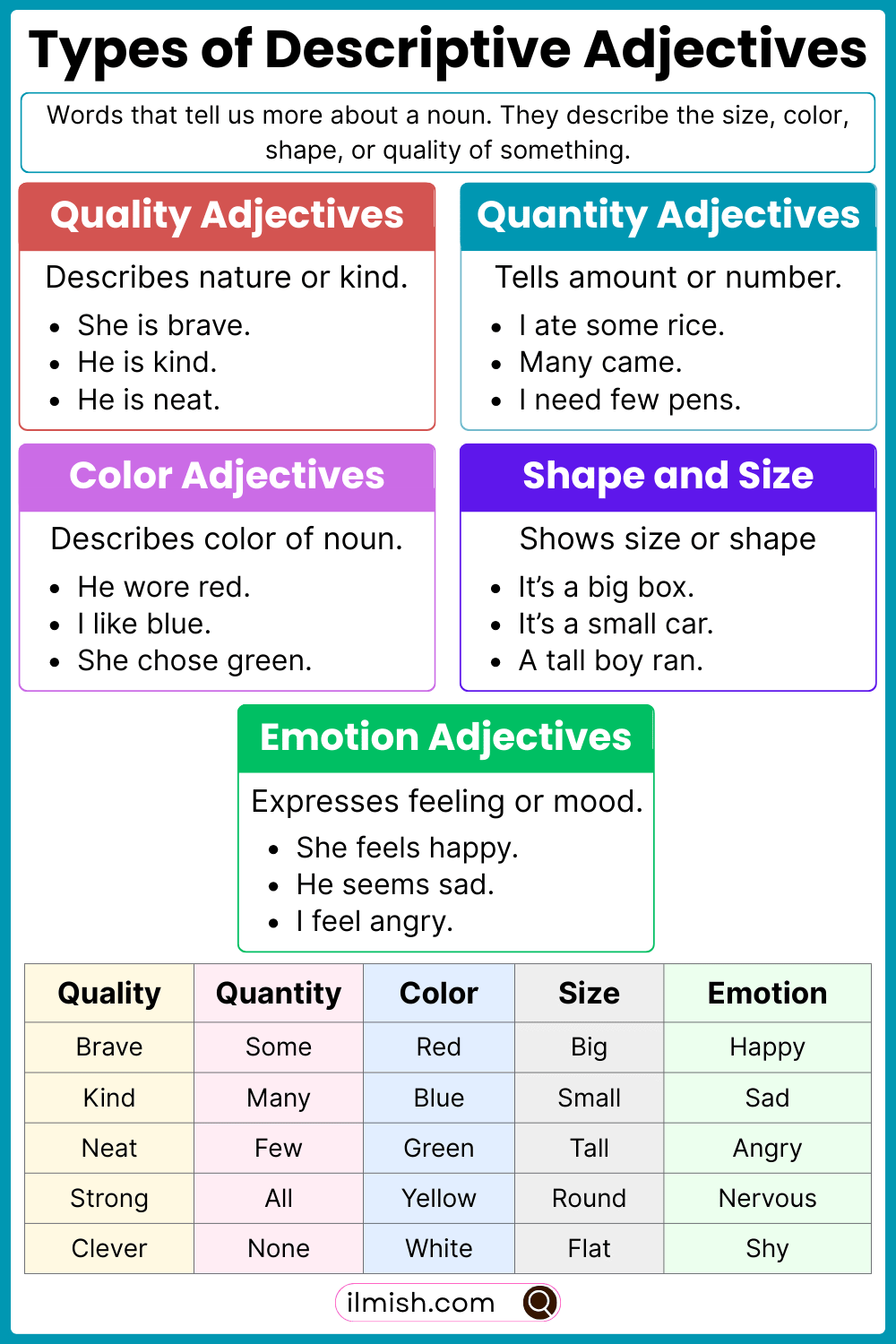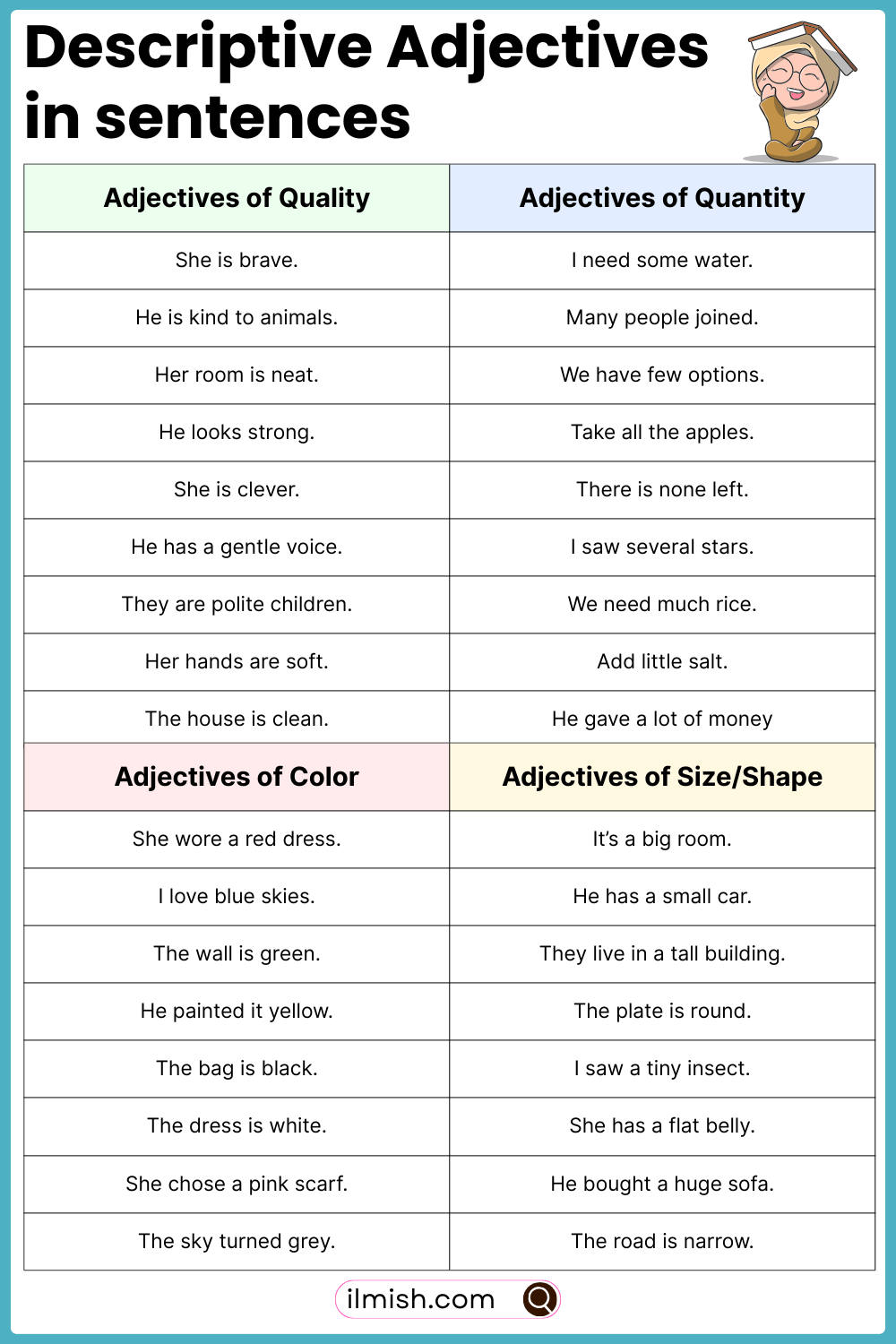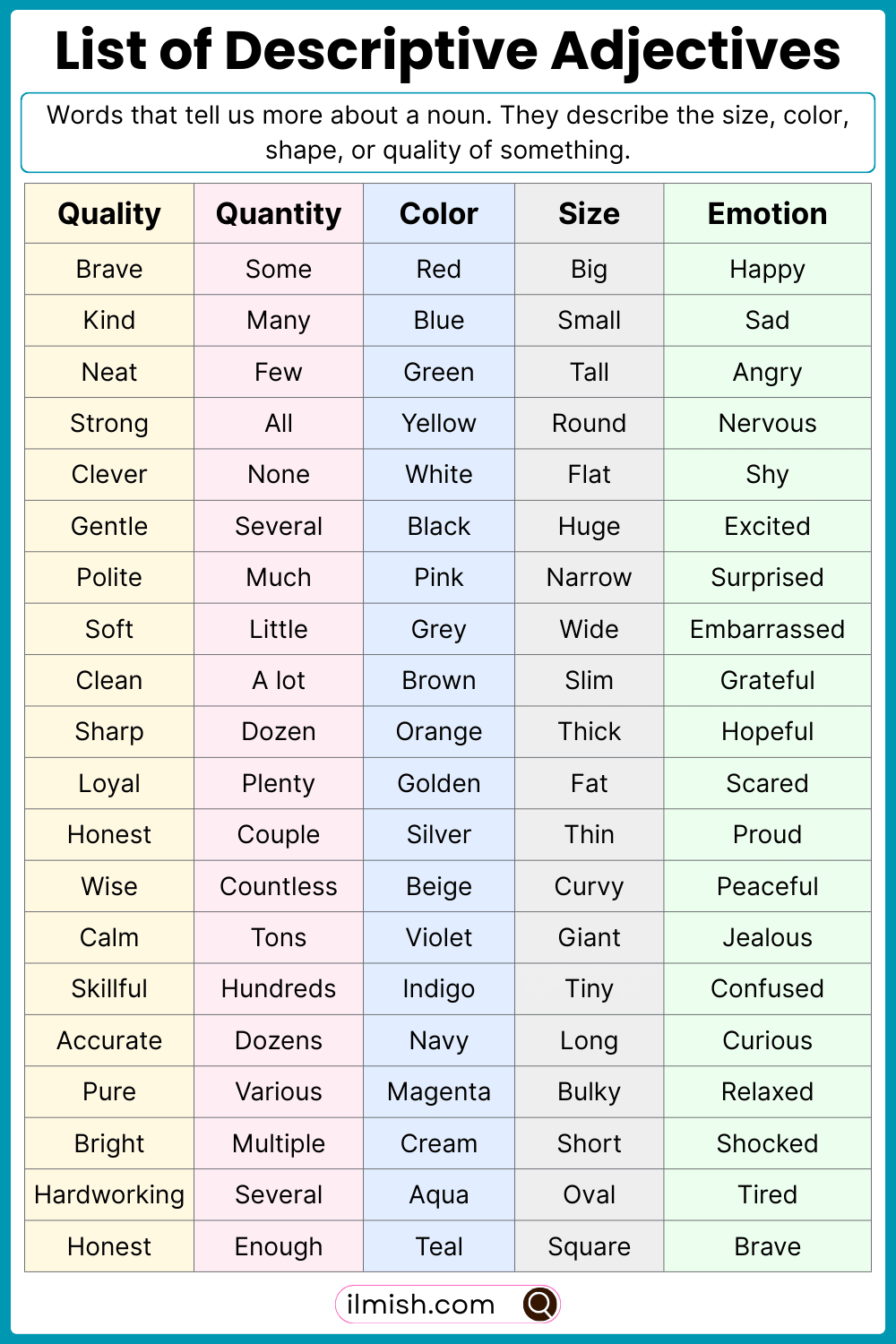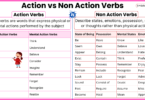What Are Descriptive Adjectives?
Why Are Descriptive Adjectives Important?
Descriptive adjectives are important because they help us show how something looks, feels, tastes, or sounds. They give more details about a person, place, or thing, so the listener or reader can understand better. For example, instead of just saying “a car,” we can say “a red, fast car.” This makes the meaning clearer and more interesting. Descriptive adjectives make our speech and writing more colorful and easier to imagine.
Types of Descriptive Adjective
Descriptive adjectives can be categorized based on what they describe. Below are the main types with examples to help you use them correctly in sentences:
1. Adjectives of Quality
| Adjective | Example Sentence |
|---|---|
| Soft | She has a soft voice. |
| Brave | The brave soldier saved lives. |
| Bitter | The medicine tastes bitter. |
2. Adjectives of Quantity
These tell how much or how many of something exists.
| Adjective | Example Sentence |
|---|---|
| Some | I need some water. |
| Many | Many students attended the lecture. |
| Few | Only a few people know the truth. |
3. Adjectives of Color
These describe the color of a noun.
| Adjective | Example Sentence |
|---|---|
| Blue | She wore a blue dress. |
| Golden | The golden sun was setting. |
| Pale | His face turned pale. |
4. Adjectives of Size and Shape
These describe physical dimensions.
| Adjective | Example Sentence |
|---|---|
| Huge | They live in a huge house. |
| Round | The table is round. |
| Tiny | A tiny insect crawled by. |
5. Adjectives of Emotion
These describe feelings or moods.
| Adjective | Example Sentence |
|---|---|
| Angry | The angry man shouted. |
| Joyful | It was a joyful celebration. |
| Nervous | She felt nervous before the exam. |
How to Use Descriptive Adjectives in Sentences
Descriptive adjectives usually come before the noun they describe:
- Correct: She has a beautiful smile.
- Incorrect: She has a smile beautiful.
However, they can also come after linking verbs (like be, seem, look, feel):
- The sky is blue.
- The cake smells delicious.
Order of Descriptive Adjective
When using multiple adjectives, follow this order for natural-sounding sentences:
- Opinion (lovely, ugly)
- Size (big, small)
- Age (young, old)
- Shape (round, square)
- Color (red, green)
- Origin (American, wooden)
- Material (silver, cotton)
- Purpose (sleeping bag, racing car)
Example:
- She bought a lovely little old round red French wooden box.
Common Mistakes with Descriptive Adjective
- Overusing Adjectives
- Wrong: The big, huge, enormous building was scary.
- Right: The enormous building was scary.
- Incorrect Order
- Wrong: She wore a cotton blue nice dress.
- Right: She wore a nice blue cotton dress.
- Confusing Adjectives with Adverbs
- Wrong: He runs quick.
- Right: He runs quickly.
Advanced Usage: Compound and Proper Adjectives
1. Compound Adjectives
These are made of two or more words (often hyphenated).
- Well-known actor
- Five-year-old child
- Ice-cold water
2. Proper Adjectives
These come from proper nouns (names of places, people, etc.) and are capitalized.
- Italian food
- Shakespearean drama
- Chinese culture
All Types Descriptive Adjective in English
| Adjectives of Quality | Adjectives of Quantity | Adjectives of Color | Adjectives of Size/Shape | Adjectives of Emotion |
|---|---|---|---|---|
| Honest | Some | Red | Big | Happy |
| Clever | Many | Blue | Small | Sad |
| Brave | Few | Green | Tall | Angry |
| Gentle | All | Yellow | Short | Excited |
| Neat | None | White | Round | Nervous |
| Strong | Several | Black | Long | Confused |
| Polite | Much | Pink | Wide | Lonely |
| Kind | Little | Grey | Narrow | Surprised |
| Soft | A lot | Brown | Huge | Embarrassed |
| Clean | Dozen | Orange | Flat | Bored |
| Sharp | Enough | Purple | Thin | Grateful |
| Honest | Plenty | Golden | Fat | Hopeful |
| Bright | Couple | Silver | Slim | Jealous |
| Hardworking | Several | Beige | Curvy | Scared |
| Calm | Countless | Violet | Thick | Proud |
| Loyal | Tons | Aqua | Oval | Peaceful |
| Wise | Hundreds | Indigo | Rectangular | Shocked |
| Skillful | Dozens | Navy | Tiny | Shy |
| Accurate | Various | Magenta | Bulky | Relaxed |
| Pure | Multiple | Cream | Giant | Curious |
Final Thoughts about Descriptive Adjective
Descriptive adjectives make your language vivid and engaging. By mastering them, you can improve both spoken and written English.
Key Takeaways:
✔ Describe qualities of nouns.
✔ Follow the correct order when using multiple adjectives.
✔ Avoid common mistakes like overuse or wrong placement.
Now that you understand descriptive adjectives, try using them in your daily conversations and writing!
Did you find this guide helpful? Let us know in the comments! 🚀
Learn more helpful articles

